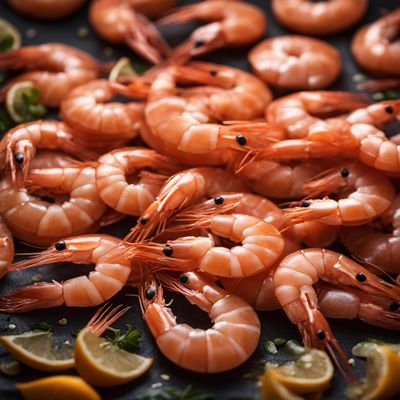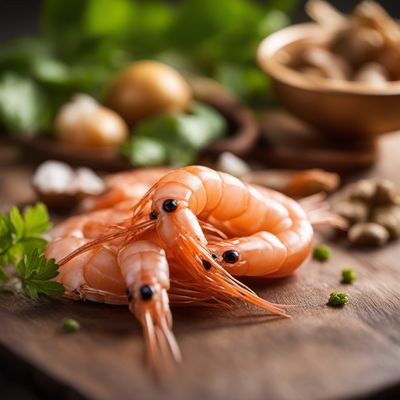
Ingredient
Shrimps and prawns
Delicious Crustaceans
Shrimps and prawns are small, shellfish crustaceans with a sweet and briny taste. They have a firm yet tender texture and are often described as succulent. These crustaceans come in a range of sizes, from tiny to jumbo, and can be cooked in numerous ways, including grilling, sautéing, boiling, or frying.
Origins and history
Shrimps and prawns have a rich history dating back to ancient times. They were highly valued by ancient civilizations such as the Greeks, Romans, and Egyptians. Today, they are harvested from both freshwater and saltwater sources worldwide. Shrimps and prawns play a significant role in coastal cuisines, particularly in Southeast Asia, the Mediterranean, and the Americas.
Nutritional information
Shrimps and prawns are low in calories and fat, making them a healthy choice. They are also a good source of protein, omega-3 fatty acids, and various vitamins and minerals, including selenium and vitamin B12.
Allergens
Some individuals may be allergic to shrimps and prawns, which can cause allergic reactions ranging from mild to severe. It is important to exercise caution and consult a healthcare professional if you suspect an allergy.
How to select
When selecting shrimps and prawns, look for ones that have a firm texture, a shiny shell, and a mild sea-like aroma. Avoid those with a strong ammonia smell or signs of discoloration. Fresh shrimps and prawns should have a translucent appearance and should not feel slimy or mushy.
Storage recommendations
To maintain their freshness, shrimps and prawns should be stored in the refrigerator at a temperature of 32°F to 38°F (0°C to 3°C). Keep them in a covered container or sealed plastic bag to prevent them from drying out. It is best to consume them within 1-2 days of purchase for optimal flavor and quality.
How to produce
Shrimps and prawns can be commercially farmed or caught in the wild. If you have access to a suitable body of water, you can also consider raising them in a controlled environment such as a pond or tank.
Preparation tips
Shrimps and prawns can be prepared in various ways, such as grilling, sautéing, boiling, or frying. They can be used in a wide range of dishes, including stir-fries, pasta, salads, soups, and seafood curries. To enhance their flavor, consider marinating them in a mixture of herbs, spices, and citrus juices before cooking.
Substitutions
Crab meat, lobster meat, or scallops can be used as substitutes for shrimps and prawns in certain recipes. However, the flavor and texture may differ slightly.
Culinary uses
Shrimps and prawns are commonly used in dishes such as shrimp scampi, shrimp cocktail, shrimp stir-fry, shrimp pasta, and shrimp curry. They are also popular in sushi and seafood boils.
Availability
Shrimps and prawns are widely available in coastal regions and countries with access to oceans, seas, or large freshwater bodies. They are commonly found in Southeast Asia, the Mediterranean, North America, and parts of Europe.
More ingredients from this category
Recipes using Shrimps and prawns » Browse all

Japanese Chinese Jalfrezi
Spicy Stir-Fried Delight: Japanese Chinese Jalfrezi
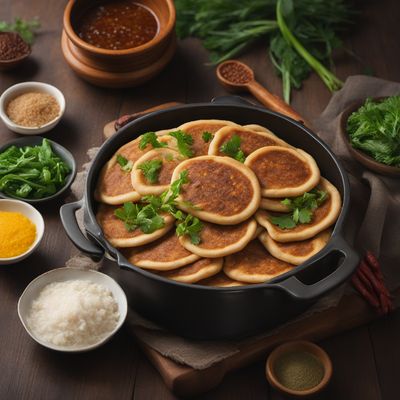
Shanghai-style Stuffed Pancakes
Savory Shanghai Pancakes: A Fusion of East and West

Rujak Soto with a Twist
Indonesian Fusion Delight: Rujak Soto with a Twist

Singaporean-style Spicy Skewers
Fiery Skewers of Singaporean Delight

Lowcountry Shrimp and Grits
Southern Comfort: Lowcountry Shrimp and Grits

Indonesian Rijsttafel with a Twist
A Flavorful Journey through Indonesian Cuisine: Rijsttafel Reinvented
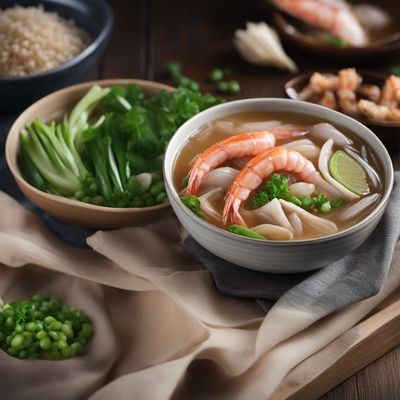
Chinese-inspired Seafood Delight
Oceanic Symphony: A Seafood Delight Inspired by Chinese Cuisine
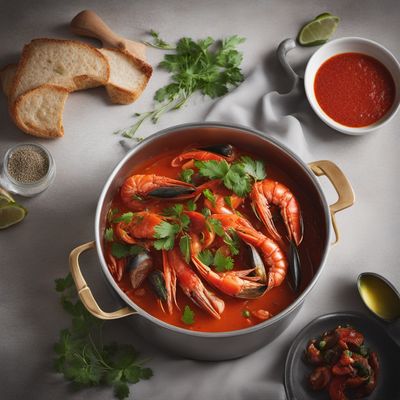
Portuguese Seafood Cataplana
Oceanic Delight: Portuguese Seafood Cataplana

Goan Spicy Prawn Salad
Fiery Goan Delight: Spicy Prawn Salad

Occitan-style Grilled Prawns with Aioli
Grilled Delicacy from the Occitan Coast: Succulent Prawns with Creamy Aioli

Chingri Malai Curry with Coconut Milk
Creamy Delight: Chingri Malai Curry with a Twist
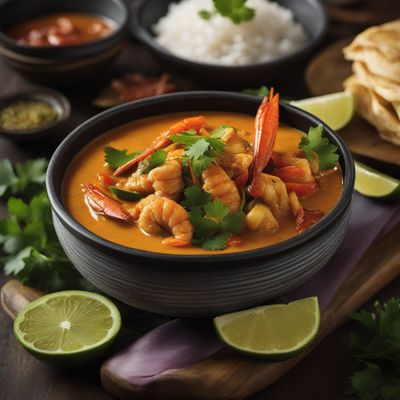
Malaysian-style Coconut Curry with Fresh Seafood
Malaysian Seafood Delight: Fragrant Coconut Curry
